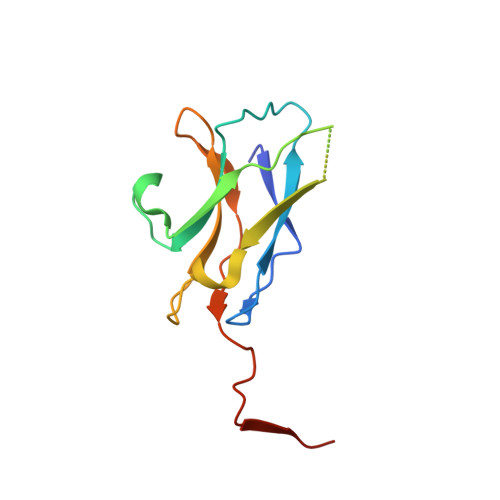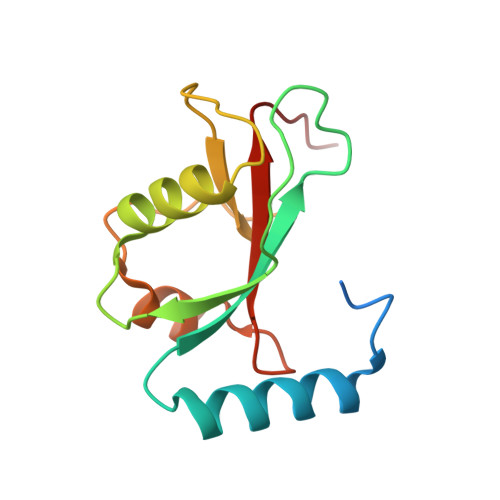LC3C, bound selectively by a noncanonical LIR motif in NDP52, is required for antibacterial autophagy
Muhlinen, N.V., Akutsu, M., Ravenhill, B.J., Foeglein, A., Bloor, S., Rutherford, T.J., Freund, S.M., Komander, D., Randow, F.(2012) Mol Cell 48: 329-342
- PubMed: 23022382
- DOI: https://doi.org/10.1016/j.molcel.2012.08.024
- Primary Citation of Related Structures:
3VVV, 3VVW - PubMed Abstract:
Autophagy protects cellular homeostasis by capturing cytosolic components and invading pathogens for lysosomal degradation. Autophagy receptors target cargo to autophagy by binding ATG8 on autophagosomal membranes. The expansion of the ATG8 family in higher eukaryotes suggests that specific interactions with autophagy receptors facilitate differential cargo handling. However, selective interactors of ATG8 orthologs are unknown. Here we show that the selectivity of the autophagy receptor NDP52 for LC3C is crucial for innate immunity since cells lacking either protein cannot protect their cytoplasm against Salmonella. LC3C is required for antibacterial autophagy because in its absence the remaining ATG8 orthologs do not support efficient antibacterial autophagy. Structural analysis revealed that the selectivity of NDP52 for LC3C is conferred by a noncanonical LIR, in which lack of an aromatic residue is balanced by LC3C-specific interactions. Our report illustrates that specificity in the interaction between autophagy receptors and autophagy machinery is of functional importance to execute selective autophagy.
Organizational Affiliation:
MRC Laboratory of Molecular Biology, Division of Protein and Nucleic Acid Chemistry, Cambridge CB2 0QH, UK.















